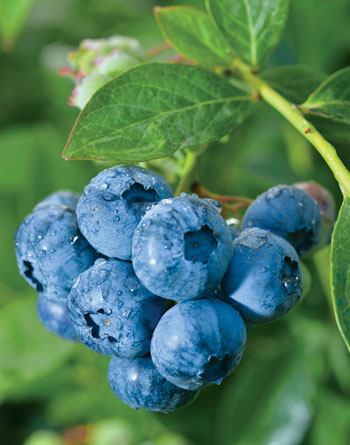Research Looks at DNA Markers to Speed and Improve Breeding
A multi-state, multi-organization research project into developing a better genomic understanding of blueberries is delivering some valuable information, according to Claire Luby, a blueberry breeder and geneticist, despite the project still being in its early stages.
“We are getting a lot of valuable information from this project and it has been very valuable for me to make connections with other vaccinium researchers,” said Luby, who started last summer at the USDA Agricultural Research Service Horticultural Crops Research Unit in Corvallis.
 |
Titled "The Vaccinium Coordinated Agricultural Project," the 5-year project involves researchers in 15 institutions in the U.S., New Zealand and Italy.
At its most basic level, the project, which is spearheaded by North Carolina State University blueberry geneticist Massimo Lorizzo, aims to help breeders develop blueberries that are both profitable for growers to produce and tasty for consumers. Within that context, the project is looking to genetic markers to help in speeding up and improving breeding selections.
“The part that we are involved in is looking to discover DNA markers and fruit characteristics that maximize industry profitability and are matched to consumer preferences,” Luby said in a video presentation at the Oregon Blueberry Conference, held February 14 in Salem.
The idea, she said, is to determine if the researchers can identify certain genetic markers with important fruit quality characteristics. “That would enable us to screen for those characteristics before we plant them all out in the field,” she said.
The researchers also are working with economists and food scientists to lead a blueberry sensory panel to look at consumer preferences by getting feedback from consumers on current cultivars.
“We are getting a lot of great information about consumer preferences from this study,” Luby said.
And the project involves measuring postharvest characteristics of the fruit, including measuring levels of leakage, mold, shrivel and other fruit quality characteristics, such as texture and flavor, as much as six weeks after harvest.
“We are looking for all those characteristics postharvest to see if we can link those characteristics to genetic markers,” Luby said.
She added that in some selections, the researchers have found no mold, leakage or shrivel. “So, that is giving us a lot of information on how we might use this in making new crosses, and once we collect all of this data, we will be able to link that to the genetic data that we have to see if we can actually correlate to improved selection,” Luby said.
To date, Luby said, the researchers have identified four selections in the USDA breeding program as very promising. “They were firm and good tasting, had really big berry size and maintained their firmness (postharvest),” Luby said.
“So, those four will go up to the Oregon State University North Willamette Research and Extension Center for replicated trials,” she said. “And we also made a number of crosses with some of these selections in 2021.”
The end-result of the study, however, could be that blueberry breeders can speed the selection process for promising cultivars for years to come.
For more information on the project, go to https://www.vacciniumcap.org.